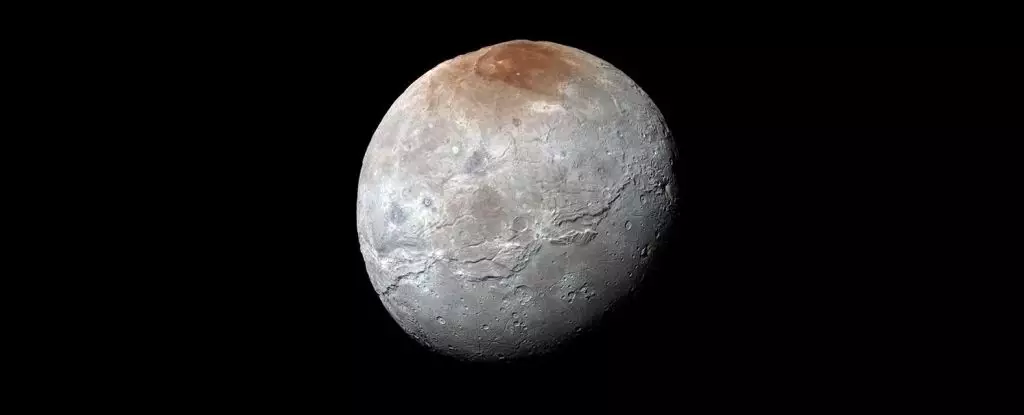The relationship between Pluto, the enigmatic dwarf planet, and its moon Charon is an extraordinary tale that delves into the history of our Solar System. Recent scientific investigations have unveiled a captivating narrative, suggesting that their connection began not with the simple formation of one from the other, but rather through a complex process of collision known as “kiss and capture.” This paradigm shift in understanding not only enhances our knowledge of these celestial bodies but also speaks to broader themes in planetary formation dynamics.
Historically, the prevailing theories around the formation of Charon were steeped in more conventional collision models, akin to the giant impact event that is understood to have formed Earth’s Moon. Such models typically adhere to classifications like “hit and run” or “graze and merge” scenarios, which envision bodies colliding and resulting in various degrees of merger or separation. However, this new research led by planetary scientist Adeene Denton introduces a distinct model where not just a collision occurs but where the bodies engage briefly in a form of celestial intimacy before drifting apart, yet remaining gravitationally bound.
This revelation poses significant questions about the limitations of our existing frameworks. The traditional models that accurately depict bodies within the Solar System’s frost line do not seamlessly apply to Pluto and Charon, which exist in a colder, denser environment beyond this boundary. The frost line marks a critical threshold where ices can form, and for Pluto and Charon, the implications of their physical and compositional characteristics are profound.
Pluto and Charon differ from the familiar Earth-Moon dynamic in several significant ways. Pluto’s diameter is modestly smaller at 2,376 kilometers, while Charon measures 1,214 kilometers across. Their proximity of just 19,500 kilometers creates a symbiotic relationship marked by a shared orbit around a mutual center of gravity. Moreover, their temperatures are significantly lower, resulting in a rigidity from ice and rock that complicates their interaction during formation scenarios.
The research team’s simulations suggest that instead of a planetesimal striking Pluto and breaking apart into debris, both bodies likely amalgamated briefly as a contact binary — a theoretical scenario where two solid bodies come into contact and remain intact. Their structural resilience prevented any violent fragmentation, preserving their identities even as they coalesced and later separated into their current stable orbits.
The implications of this new model extend beyond mere theoretical discussions. The research demonstrates that this “kiss and capture” scenario accurately reflects the observed orbital characteristics of both Pluto and Charon. Erik Asphaug, another prominent voice in the study, emphasized the dual validation of their approach: the model not only illustrates how Charon was captured but also elucidates its current orbital properties. It offers a striking example of how improved modeling can yield multifaceted insights into celestial mechanics.
Moreover, the study opens the door to a more intricate understanding of other celestial pairings in the universe, suggesting that the processes driving the formation of planetary bodies and their moons may be richer and more complicated than previously acknowledged.
Denton notes that this groundbreaking understanding will allow astronomers to explore how this initial configuration might have influenced Pluto’s geological evolution. The geological history of celestial bodies, shaped by their early encounters and interactions, presents a narrative laden with complexities awaiting discovery. By examining their formation, scientists can glean insights into not only Pluto and Charon but also into other worlds shaped by similar cosmic processes.
The tale of Pluto and Charon, far from being a straightforward love story, unfolds as a multifaceted narrative woven through collisions in the great expanse of space. This research illuminates the intricate dance of celestial bodies and reshapes our perceptions of planetary formation, encouraging deeper exploration into the wonders of the universe still to be understood. Such insights reinforce the value of continuously questioning established paradigms in science, as the narrative of the cosmos remains one of the vastest mysteries humanity seeks to unravel.


Leave a Reply